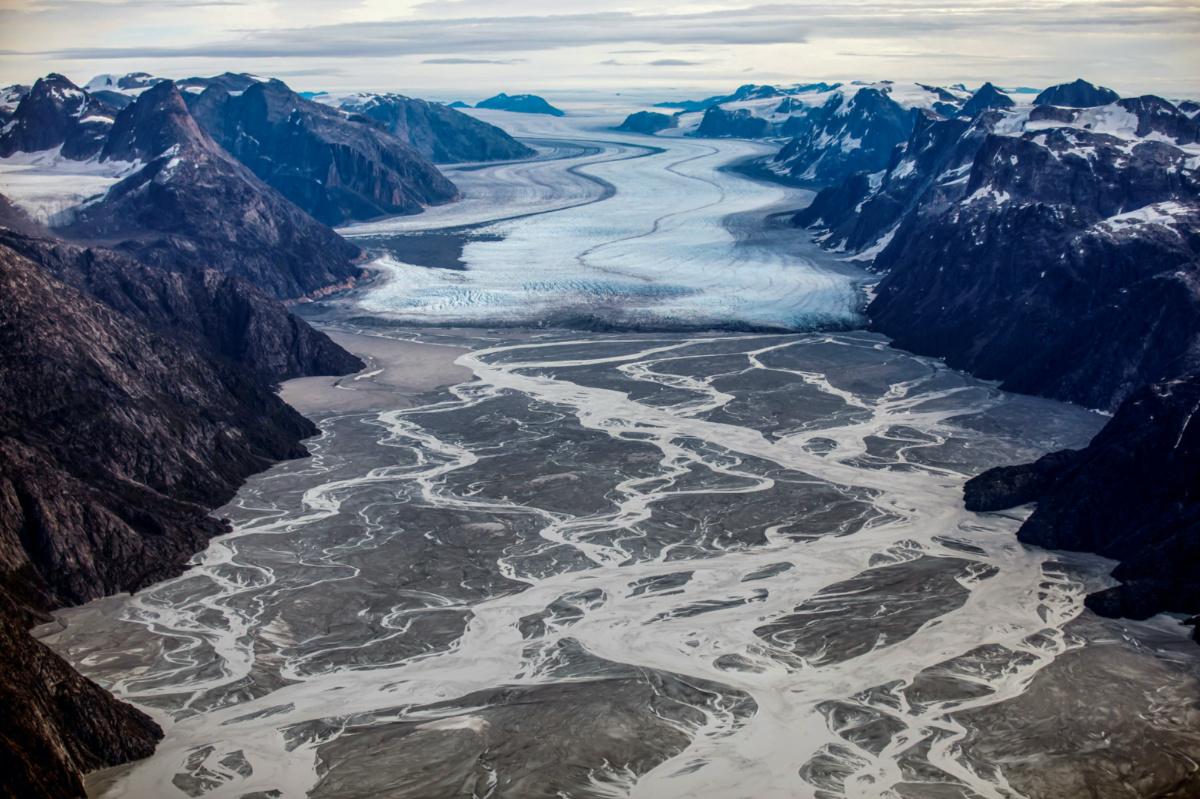London, UK
Reuters
When might the world’s bleaching coral reefs pass the point of no return? When would warming temperatures cause the Greenland Ice Sheet to collapse and trigger severe sea level rise? These worrying scenarios could happen sooner than expected, according to new scientific research.
For more than a decade, climate researchers have been monitoring 16 “tipping points” – or environmental thresholds beyond which the global climate system could spiral toward a dangerous state.
Precisely how much global warming it will take to breach these thresholds, however, has remained a question mark.

The melting Sermeq glacier, located around 80 kilometres south of Nuuk, is photographed in this aerial over Greenland, on 11th September, 2021. PICTURE: Reuters/Hannibal Hanschke/File photo.
The 2015 Paris Agreement aims to keep temperature gains well below two degrees Celsius in hopes of averting the worst consequences of climate change, but a new analysis of more than 200 research papers on tipping points finds it is possible the world could hit some of these thresholds at the level of warming – 1.1 degrees Celsius – we’re experiencing now.
“We can see some potential early warning signals,” said climate scientist David Armstrong McKay, a coauthor of the study published Thursday in the journal Proceedings of the National Academy of Sciences.
Already, “the Greenland Ice Sheet is showing signs of destabilisation with lots of melt and there are potentially early warnings that the Atlantic circulation might be slowing down,” said McKay, who works at the University of Exeter in Britain.
The latter is crucial in moving heat from the tropics into the northern hemisphere. A shutdown would trigger widespread cooling around western Europe and eastern North America.
For this first scientific study to test the 16 tipping points against different warming scenarios, the team of international scientists pored over the data and findings from past studies.
Five tipping points – the disintegration of the West Antarctic and Greenland ice sheets, coral reef die-offs, collapse of the Labrador-Irminger Seas convection and abrupt permafrost thaw – could happen now, the team finds.
Arctic permafrost thaw would release huge amounts of carbon into the atmosphere. Coral reef die-offs would obliterate the marine food web.
“At the moment, they are possible rather than likely,” McKay stressed, but he added, “it’s definitely concerning.”
At 1.5 degrees of warming, another five tipping points would be reachable.
Earlier this year, the UN Intergovernmental Panel on Climate Change stated that the risk of triggering climate tipping points becomes high by around 2 degrees of warming.
“While the IPCC has formulated more cautiously…we are all aware that 1.5 warming does not take us to a safe haven,” said marine biologist Hans-Otto Portner at the Alfred Wegener Institute in Germany who co-chaired the IPCC report.
The world is on track to warm 2.6 degrees by 2100.






